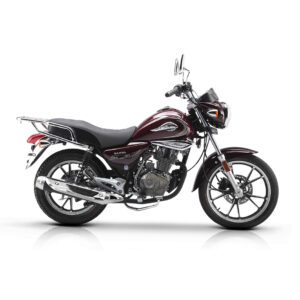Because higher doses of alcohol exert specific pharmacological effects on drinkers, we had a few double‐blind RCTs after the first screening. Considering the difficulty of masking in these types of studies, we decided to also include single‐blind and open‐label studies in the review. We also did not rate the certainty of evidence based on the funding sources of studies or on lack of a registered protocol because we did not think this would affect the effect estimates for these outcomes. However, we noted the lack of description of randomisation and allocation concealment methods in most of the included studies as a reason for downgrading because of the possibility of selection bias. We identified Stott 1987 and Barden 2013 from Analysis 3.1 and Analysis 3.2 as having a considerably lower standard error (SE) of the mean difference (MD) compared to the other included studies. Assuming that the low SEs of MDs reported in Stott 1987 and Barden 2013 are errors and are not reliable, we replaced these measures with the average SE of MD from the rest of the included studies.
- « Pinot Noir is one of the healthiest wines you can consume due to its low level of tannins and high concentrations of resveratrol, and this type of wine is typically lower in sugar and calories than other varieties. »
- We also checked the list of references in the included studies and articles that cited the included studies in Google Scholar to identify relevant articles.
- Alcohol can affect blood pressure through a variety of possible mechanisms.
- The effect of coffee on blood pressure has been a longstanding source of controversy in the scientific community.
We did not identify enough studies to construct a funnel plot for the outcomes under low doses of alcohol. We interpreted only funnel plots that were constructed based on studies reporting outcomes under medium dose and high dose of alcohol versus placebo comparisons. Different types of alcoholic beverages including red wine, white wine, beer, and vodka were used among 32 studies.
What about alcohol and my weight?
Review authors included nine studies involving a total of 119 participants, and the duration of these studies was between four and seven days. Participants in those studies consumed alcohol regularly during the study period, whereas in our systematic review, we included only studies in which participants consumed alcohol for a short period. Based on nine studies, McFadden 2005 reported that the mean increase in SBP was 2.7 mmHg and in DBP was 1.4 mmHg. The inclusion of non‐randomised studies in McFadden 2005, which are known to be at higher risk of bias, is likely the reason for the discrepancy in the magnitude of BP effects.

You should never consider wine or any other alcohol as a way to lower your heart disease risk. And, in fact, the study also showed that drinking one or fewer drinks per day was related to the lowest likelihood of dying from a stroke. However, Dr. Cho points out that more recent data shows that there may be no amount of alcohol that is truly safe. “The myth that wine is beneficial for heart health is no longer true,” she states. Risk factors for high blood pressure include smoking, eating a diet high in sodium, and low physical activity levels. However, current recommendations like those from the Centers for Disease Control and Prevention (CDC) focus on limiting alcohol to one drink a day for women and two drinks a day for men.
How to reduce your drinking
Here’s a closer look at everything we know about the effects of alcohol on heart health. If you’re concerned about your blood pressure, be sure to talk with a doctor about the best way to manage your blood pressure and heart health. Just as some drinks can help lower blood pressure, several others may actually increase blood pressure levels.

For example, a blood or saliva test can detect alcohol in the blood for up to 12 hours. A urine test can detect alcohol for hours and even more than 72 hours after excessive alcohol drinking. It’s also helpful to think about how drinking too much wine can impact your weight, which can impact your blood pressure. « Wine contains empty calories, which can lead to weight gain and increased blood pressure as a result, » says Best, « so this is something to keep in mind for those dealing with high blood pressure. » « For one, the hormone renin causes blood vessels to contract, and alcohol increases the production of this hormone, » says Best.
Ziauddeen 2013 published data only
In the United States, the standard shot for a distilled spirit like whiskey with 40% ABV is 1.5 ounces. The data used in this analysis is subject to a data use agreement and cannot be widely shared, but readers interested in data access or replication should contact the corresponding author or the CARDIA Coordinating Center. If cutting back on alcohol is hard for you to do on your own, ask your whiskey and blood pressure health care professional about getting help. As planned, we conducted sensitivity analyses to see if there was any significant difference between effect estimates of outcomes given by the fixed‐effect model and the random‐effects model, when substantial heterogeneity was present. The result is presented in Table 6; there was no significant difference between results given by the two models.
The researchers reported that long-term intake of both types of tea lowered both systolic and diastolic blood pressure. A 2017 literature review of eight randomized, controlled trials found that consuming pomegranate juice may help lower both systolic and diastolic blood pressure. For example, some people who are on cholesterol-lowering medicines may experience muscle aches when they drink alcohol. Because alcohol and cholesterol medicine both are processed through your liver, they are, in a sense, competing for clearance. So, it’s important to think about your overall health and talk to a healthcare provider about your personal risk factors.















